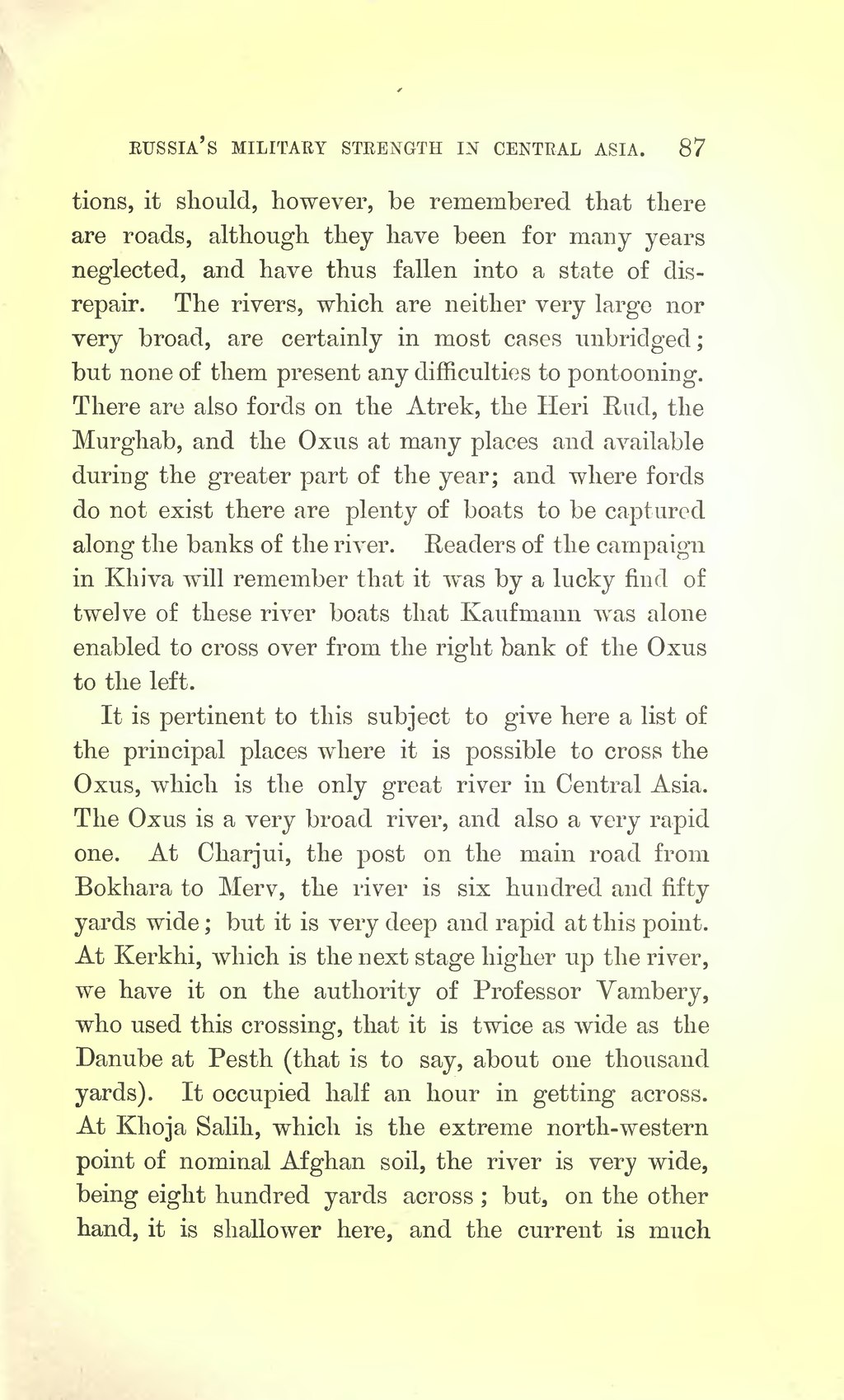EUSSIA's MILITAEY strength in central ASIA. 87 tions, it sliould, however, be remembered that there are roads, although they have been for many years neglected, and have thus fallen into a state of dis- repair. The rivers, which are neither very large nor very broad, are certainly in most cases unbridged; but none of them present any difficulties to pontooning. There are also fords on the Atrek, the Heri Rud, the Murghab, and the Oxus at many places and available during the greater part of the year; and where fords do not exist there are plenty of boats to be captured along the banks of the river. Readers of the campaign in Khiva will remember that it was by a lucky find of twelve of these river boats that Kaufmann was alone enabled to cross over from the right bank of the Oxus to the left. It is pertinent to this subject to give here a list of the principal places where it is possible to cross the Oxus, which is the only great river in Central Asia. The Oxus is a very broad river, and also a very rapid one. At Charjui, the post on the main road from Bokhara to Merv, the river is six hundred and fifty yards wide ; but it is very deep and rapid at this point. At Kerkhi, which is the next stage higher up the river, we have it on the authority of Professor Yambery, who used this crossing, that it is twice as wide as the Danube at Pesth (that is to say, about one thousand yards). It occupied half an hour in getting across. At Khoja Salih, which is the extreme north-western point of nominal Afghan soil, the river is very wide, being eight hundred yards across ; but, on the other hand, it is shallower here, and the current is much
Page:England & Russia in Central Asia,Vol-I.djvu/107
This page needs to be proofread.
87
ENGLAND AND RUSSIA IN CENTRAL ASIA. THE AMOU DARYA.
87
